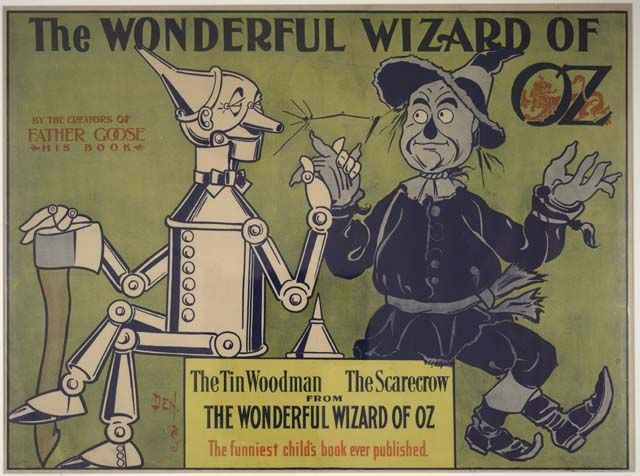Three Interesting Facts About Earth Materials and the Wizard of Oz
by Ken Rock, MSDC Editor
Adapted from 20 Fascinating Facts About “The Wizard of Oz” found on InterestingFacts.com

As we learned in the great presentation last month by Thomas Hale, minerals are essential not only for technology, but also in virtually everything we build and use in our daily lives. The Tin Man in the film "The Wizard of Oz," is one obvious connection to earth materials, but I thought I'd share three interesting facts also related to the 1939 film that features a a young adventurous child bumping into wizards, witches, and talking animals. This imagery includes scarecrows, prairies, and hot air balloons and is neatly wrapped into a reflection on the American dream, or the idea that brains, heart, and courage — combined with hard work — can help you achieve your goals.
Fact #1: Many Places Claim to Be Home of the Original Yellow Brick Road

In the late 19th century, yellow brick roads were relatively common. The color is caused by a low iron content, plus high levels of lime. So it’s no surprise that many places claim to have inspired Oz’s most famous roadway.
Purported locations include Peekskill, New York (where the book's author, Frank Baum, attended a military academy) and Ithaca, New York (where Baum’s wife, Maud, attended college). Baum’s son argued the fictional path took after the cobblestone roads of Holland, Michigan, where his father summered. Other claimants include Dallas, Chicago, and Aberdeen, South Dakota.
Fact #2: The Makeup Was Toxic

Originally, the role of the Tin Man was to be played by Buddy Ebsen, who later became best known for his role as Jed Clampett on The Beverly Hillbillies. But the actor quickly realized he was allergic to the aluminum dust in his makeup: After just 10 days, he began complaining of aches and shortness of breath and had to be hospitalized.
Ebsen wasn’t the only one who had problems with his makeup. The makeup was so poisonous that some actors could not eat once it had been applied. They opted for a liquid diet, nourishing themselves through straws.
Fact #3: The Book Contains a Slick Sales Pitch

Before he was writing books and short stories, Frank Baum was working as a traveling salesman for his family’s oil company. The corporation’s top product was an axle oil called “Baum’s Castorine,” which was advertised as being “so smooth it makes the horses laugh.” It’s in this context that the Tin Woodman (or Tin Man, as he’s called in the film) was likely invented. When Dorothy meets the Tin Man, he badly needs a can of lubricating oil. It’s almost as if Baum couldn’t help himself from making one last sales pitch!
Bonus Fact: Baum May Have Named Oz After a Piece of Office Furniture
“I have a little cabinet letter file on my desk in front of me,” Baum told the St. Louis Republic in 1903. “I was thinking and wondering about a title for my story, and I had settled on ‘Wizard’ as part of it. My gaze was caught by the gilt letters on the three drawers of the cabinet. The first was A-G; the next drawer was labeled H-N; and on the last were the letters O-Z. And Oz it at once became.” Some researchers suspect Baum was joking here.
